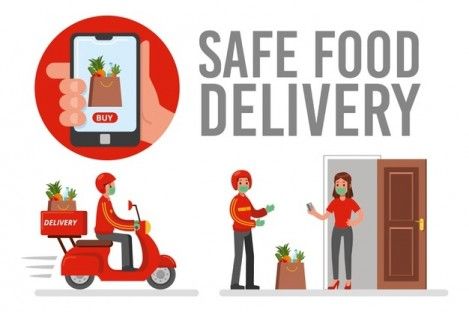By integrating a face mask recognition software in your UberEats clone, the software recognizes face masks on drivers’ faces effortlessly, reducing the admin’s workload.
With the fear of COVID-19 mounting among people with each passing day, restaurants have no other options but to join hands with food delivery apps. With governments restricting dine-ins as a measure to curb disease spread, food delivery apps have an added responsibility up to their shoulders - safeguarding the entire community from COVID-19 contractions.
Platforms like UberEats have come up with safety strategies ever since the outbreak situation. However, a considerable extent of the population still hesitates to order via these platforms. Public bodies like CDCP (Centers for Disease Control and Prevention), WHO (World Health Organization), etc., have reiterated that COVID-19 is not food-borne. However, virus transmissions can still happen via external physical contact. This fact is one of the main reasons governments of worldwide nations encourage social distancing and advise people to stay indoors unless necessary.
Are you an entrepreneur aspiring to introduce a food delivery app like UberEats? With the market for food delivery apps soaring high, this can be the right time to captivate the audience and attract a wide range of restaurants to your on-demand food delivery app. All you need is the right approach to tackle the COVID-19 situation. This blog discusses a list of strategies to combat the outbreak situation with an ultra-modern UberEats clone app.
#1 Go Contactless
Encourage your delivery team and customers to avoid any form of contact with each other. Customers can instruct delivery executives to drop their food orders in a confined place in front of their homes rather than directly hand them over.
Besides, instead of paying via cash, customers can pay via digital payment modes, such as credit/debit cards, net banking, digital wallets, etc. This way, both delivery drivers and customers are safeguarded from virus transmission.
#2 Safety gear and software for verification
Delivery drivers come in direct contact with the food as well as customers. As they are directly exposed to the external environment for long hours, they have higher chances of contracting the virus. Hence, providing safety gear like gloves, masks, and sanitizers are ideal for safeguarding them.
On the other hand, enabling selfie screening with the aid of an admin is time-consuming and strenuous. By integrating a face mask recognition software in your UberEats clone, the software recognizes face masks on drivers’ faces effortlessly, reducing the admin’s workload.
#3 Safety badges for scrutinized restaurants
Trust is one factor that determines the success or failure of any business. Maintaining hygiene standards and safety in restaurants can go a long way in ensuring food safety. Hence, it is crucial to assess restaurants’ safety conditions before joining hands with them for their services. Besides, conducting periodic visits from time to time can also come in handy in the current scenario. Those restaurants that abide by the safety standards can be provided with safety badges.
Wrapping up,
With people leaning towards food delivery apps, there cannot be an ideal time to storm into the food delivery sectors. Implement these safety strategies in your food delivery app and experience instant traction.





